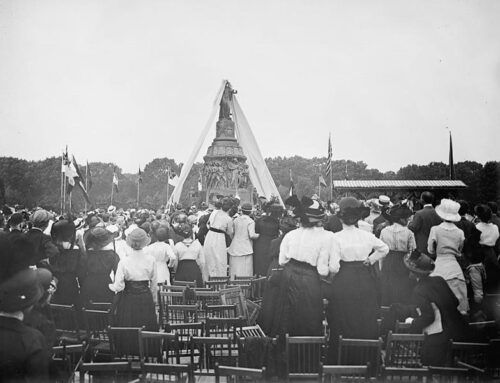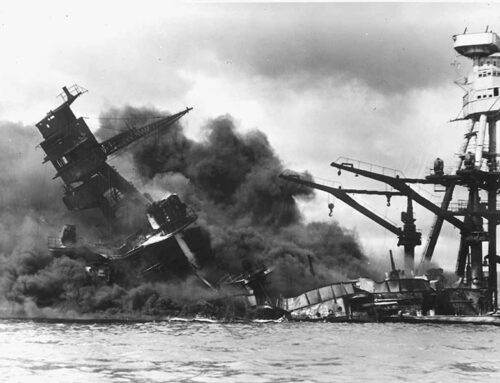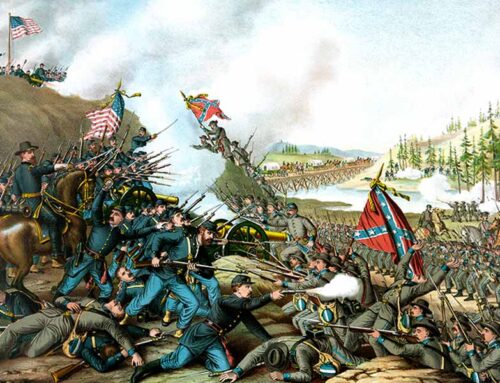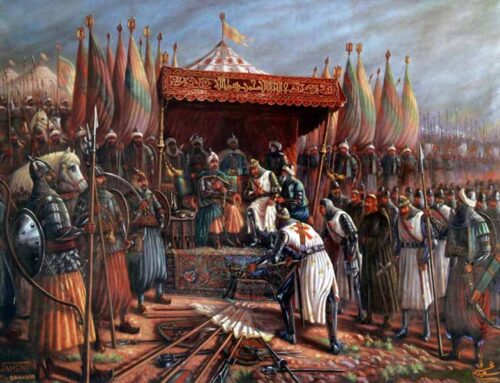“The king’s heart is in the hand of the LORD, like the rivers of water; He turns it wherever He wishes.” —Proverbs 21:1
Robert the Bruce Crowned King of Scotland,
March 25, 1306
![]() or more than two hundred years, the House of Canmore, eight kings in succession, had ruled Scotland. In 1285, King Alexander III wed a young French princess, Yolande of Dreux, his second wife, after ten years of widowerhood. The children of his first marriage had all died, his sons without issue; Alexander had no living siblings. The robust but careless Alexander left a night of carousing during a powerful thunderstorm, and rode off a cliff into the North Sea, bringing his thirty-six-year reign to a crashing halt. Margaret, the seven-year-old granddaughter of Alexander, was the last legitimate heir to this throne of the line of “William the Lion.” She died on the way to Scotland from her home in Norway. Thirteen nobles claimed the throne. One of those claimants was the seventh generation named Robert Bruce.
or more than two hundred years, the House of Canmore, eight kings in succession, had ruled Scotland. In 1285, King Alexander III wed a young French princess, Yolande of Dreux, his second wife, after ten years of widowerhood. The children of his first marriage had all died, his sons without issue; Alexander had no living siblings. The robust but careless Alexander left a night of carousing during a powerful thunderstorm, and rode off a cliff into the North Sea, bringing his thirty-six-year reign to a crashing halt. Margaret, the seven-year-old granddaughter of Alexander, was the last legitimate heir to this throne of the line of “William the Lion.” She died on the way to Scotland from her home in Norway. Thirteen nobles claimed the throne. One of those claimants was the seventh generation named Robert Bruce.
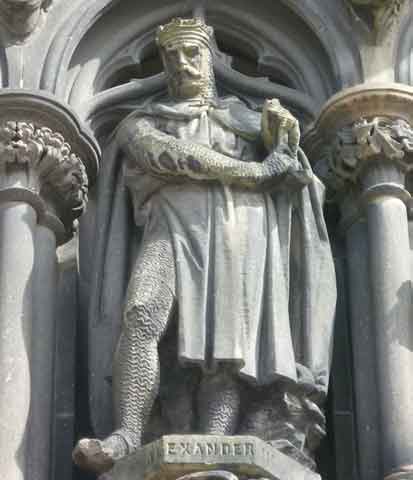
Alexander III of Scotland (1241-1286)
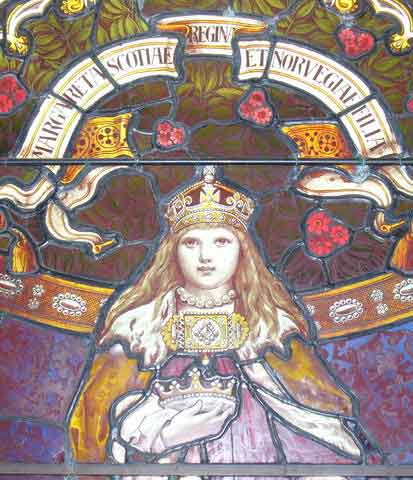
Margaret, Maid of Norway (1283-1290)
The oldest of ten children, Robert de Brus, of old Norman stock, was likely born at Turnberry Castle in Ayrshire, Scotland in 1274. His father, Robert de Brus, 6th Lord of Annandale and his mother, Marjorie, Countess of Carrick, put young Robert in the royal line as the fourth great-grandson of King David I. The Bruce family counted themselves among the wealthiest and most privileged of Scottish nobility, owning significant amounts of land in England, Scotland, and Ireland. Robert’s grandfather had almost become king after Alexander II. They had developed a reputation as warriors, and as a scion of a knighted family, Robert learned horseback riding, swordsmanship, jousting and the code of chivalry. His father and grandfather had embarked on a crusade to the Holy Land, and Robert VII became more proficient at arms than all of them. Robert learned in a multi-lingual family both Gaelic and Anglo-Norman, as well as Latin. He likely spoke Scots as well, since he lived in a Celtic area that was developing that language at that time. Young Robert the Bruce possessed all the skills and pedigree to become king of Scotland. His ancient grandfather of the same name would first make another play for the throne.

The ruins of Turnberry Castle and Ailsa Craig in Ayshire, Scotland, birthplace of Robert the Bruce

Bust of Robert the Bruce (1274-1329) at the Wallace Monument in Stirling, Scotland
Alexander III’s brother-in-law, Edward I of England—seven feet tall in his armor, a fearless warrior king, survivor of the 9th Crusade, chaste and religious in private life, a law-giver and castle-builder—determined otherwise. Master of political intrigue, Edward (nicknamed Longshanks for obvious reasons) would become known as “the Hammer of the Scots.” Robert the Bruce could have been known as the anvil. Edward had arranged with the Pope for the marriage of his own son, who would become Edward II, to be married to the Maid of Norway, thus eventually uniting the crowns of Scotland and England. When young Margaret died, a new secret plan had to be put into effect by the English monarch. None of the thirteen claimants was singly strong enough to take the throne himself. Seven earls asked Edward to arbitrate between the two strongest competitors—Robert Bruce (“the contender”) and John Balliol. In 1292, Edward chose Balliol, but claimed ultimate sovereign authority for himself. The youngest Robert Bruce was eighteen and striving for knighthood.
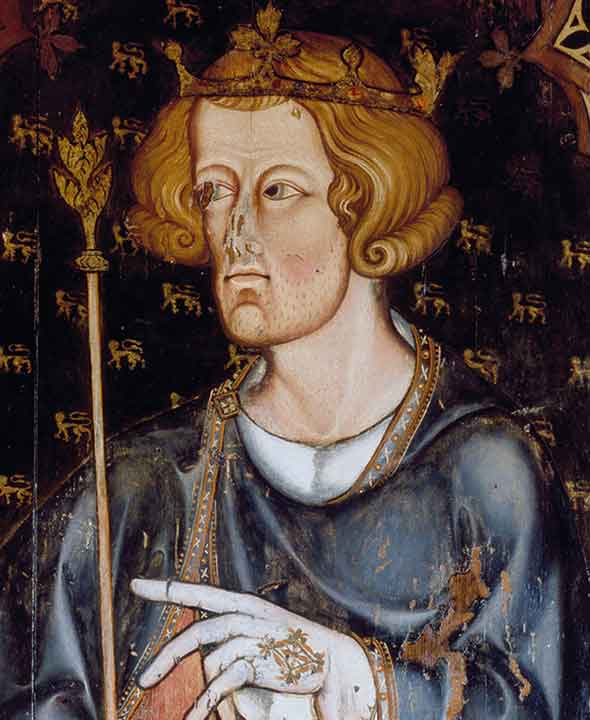
Edward I of England (1239-1307)
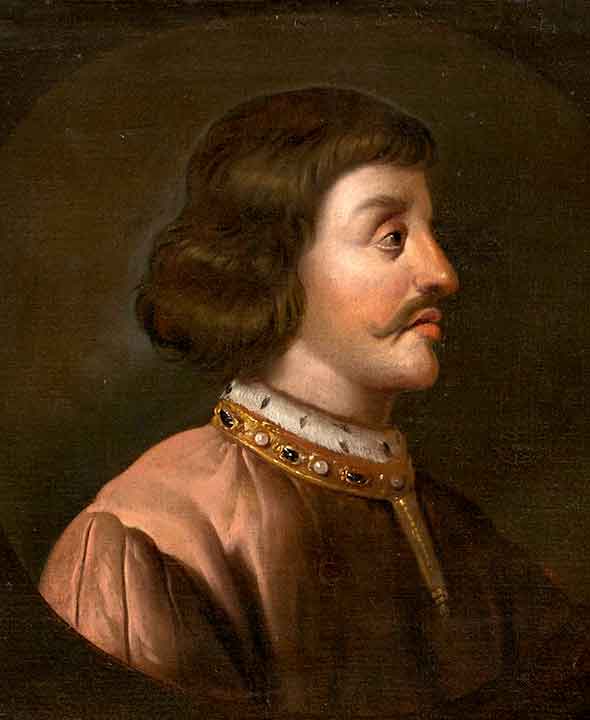
John Balliol (1249-1314)
When Edward called for the Scottish army to assist him in conquering France, Balliol refused and formed an alliance with France. The Bruces sided with Edward. Thus began the war between England and Scotland. England quickly defeated King John (Balliol) and threw him in the Tower of London. English troops were garrisoned across Scotland and young Robert Bruce, now twenty-two, joined the rebel cause against Edward. Led by lesser nobles William Wallace and Andrew Moray, and supported by several Scottish bishops, a Scottish force defeated King Edward’s forces at Stirling, after which Wallace was knighted and became a Guardian of Scotland, since King John was still in exile. Edward took to the field himself and in turn defeated the Scots at Falkirk. No written records place Robert Bruce at either battle.
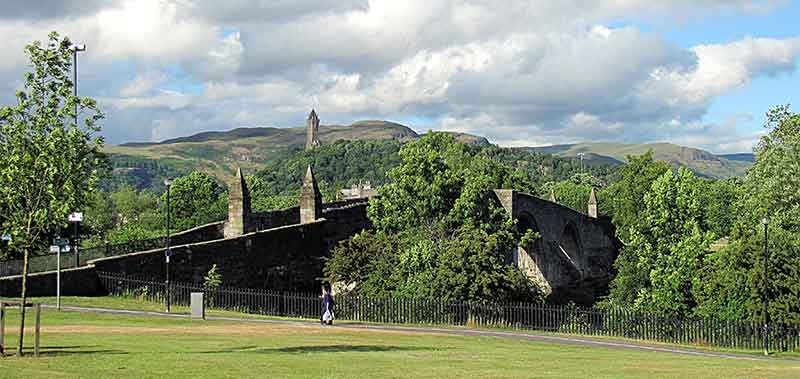
Stirling Bridge today with the William Wallace monument in the background, Stirling, Scotland
Robert Bruce and John Comyn replaced Wallace as Guardians of Scotland and carried on the war with England. After six offensives against Scotland, in 1302 Edward called for a truce of nine months, in which time Robert the Bruce submitted to Edward as King. With the whole country under submission to Edward—except William Wallace—by 1304. The following year Wallace was captured, hanged, drawn and quartered. Edward suspected that Bruce still had pretension for the throne of Scotland, but Robert slipped out of London and made his way secretly back to Scotland. While meeting with his chief rival John Comyn at Greyfriars Monastery in Dumfries, Bruce and two compatriots killed his rival, asserted his claim of the throne of Scotland and continued the campaign for independence from England. On March 25, 1306, Bishop Wishart crowned Robert Bruce as King of Scotland at the traditional place at Scone.
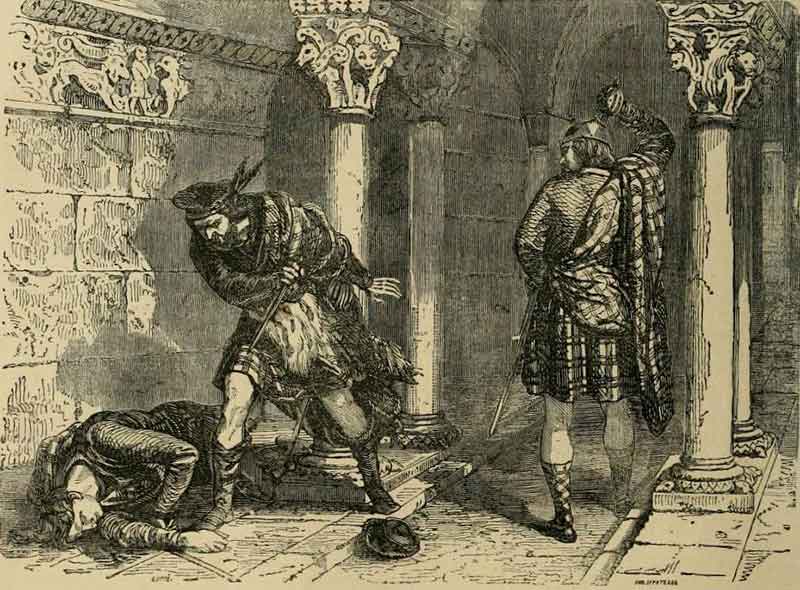
Assassination of John Comyn at the hands of Robert the Bruce and Roger de Kirkpatrick at Greyfriars Church in Dumfries, February 10, 1306

Bruce being crowned King of Scotland a second time on March 26 by Isabella MacDuff, Countess of Buchan (having arrived a day late for his initial coronation on March 25) in keeping with the tradition that the crown was placed by a member of Clan MacDuff, which Bruce agreed to to avoid his coronation being viewed as illegitimate by the people
Edward’s next campaign resulted in the capture of several Bruce castles and the defeat of his troops, as well as the execution of three of Bruce’s brothers and several nobles sympathetic to his cause, and the seizure and incarceration of his wife and daughters. Bruce disappeared for a year, no one knows where, and returned to carry on the war for independence in 1307. With the death of Edward I in 1307, the war continued under his son Edward II. Throughout 1308 Robert de Bruce captured and destroyed all the castles loyal to the Comyns, thoroughly eliminating all opposition to his rule. Over an eight year period, Bruce defeated most English garrisons and castles, without the use of siege weapons, in a guerilla campaign which included raids into England, successes difficult to explain even today.

Stirling Castle on the hilltop overlooking the town of Stirling, Scotland
In June of 1314, Robert’s brother Edward Bruce laid siege to Stirling Castle, which finally drew Edward II and the English army into Scotland. Although outnumbered, Robert the Bruce maneuvered his enemies into a major battle at Bannockburn near Stirling, destroying the English army and nearly capturing the English king. King Robert I ruled until his death in 1329 and was buried at Dunfermline Abbey, having won Scotland’s independence. It is no wonder that Robert the Bruce has gone down in Scottish history as one of the greatest kings: his leadership, perseverance, combat skills, and confidence in God and his cause uniquely combined with a protective providence to win independence and fulfill the hopes of his ancestors.
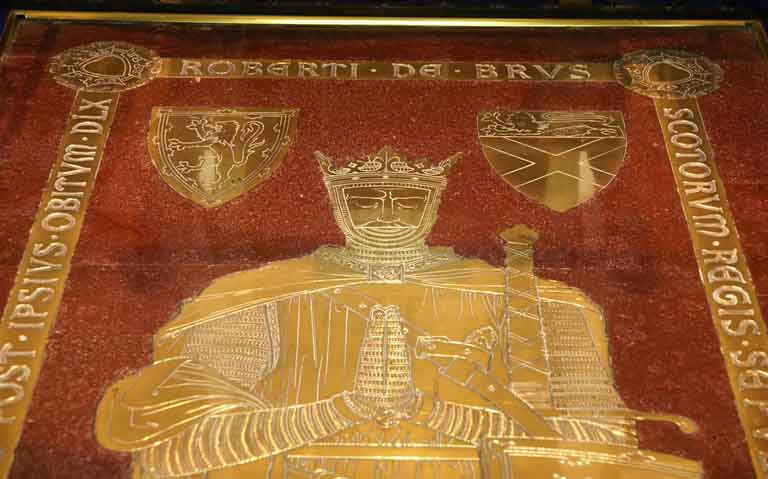
Final resting place of Robert the Bruce at Dunfermline Abbey, Dunfermline, Fife, Scotland

Dunfermline Abbey, Dunfermline, Fife, Scotland
Scotland Tour Filling Fast!
Our nation has more ties to Scotland than any nation in the world. For two weeks Bill Potter, Colin Gunn and a host of local Scottish churchmen and historians will lead 35 adventurous souls on an unforgettable providential history tour of the land of the ancient Celts and fiery Covenanters in Scotland. We will follow in the footsteps of William Wallace and Robert the Bruce to the battlefields, castles and memorials of their bygone era. Learn More >

- Robert the Bruce, King of Scots, by Ronald McNair Scott, NY, 1982
Image Credits: 1 Alexander III of Scotland (wikipedia.org) 2 Margaret, Maid of Norway (wikipedia.org) 3 Turnberry Castle Ruins (wikipedia.org) 4 Robert the Bruce (wikipedia.org) 5 Edward I “Longshanks” (wikipedia.org) 6 John Balliol (wikipedia.org) 7 Stirling Bridge (wikipedia.org) 8 Death of John Comyn (wikipedia.org) 9 Coronation by Isabella MacDuff, Countess of Buchan (wikipedia.org) 10 Stirling Castle (wikipedia.org) 11 Tomb of Robert the Bruce (wikipedia.org) 12 Dunfermline Abbey (wikipedia.org)




